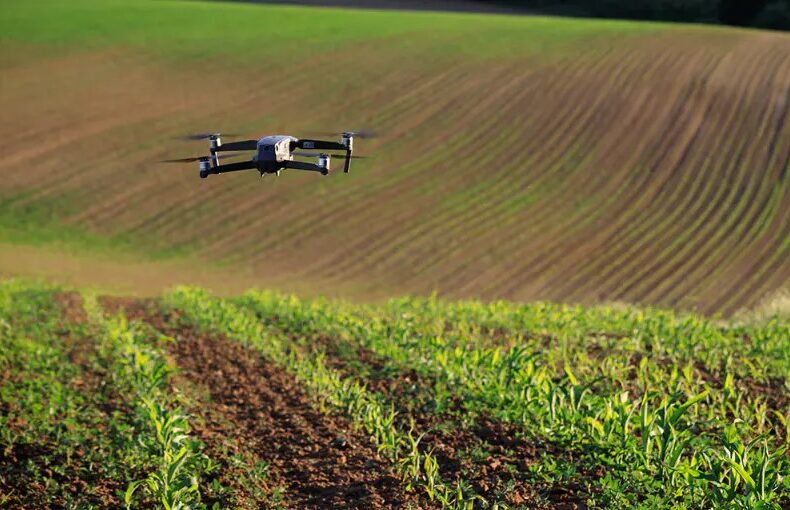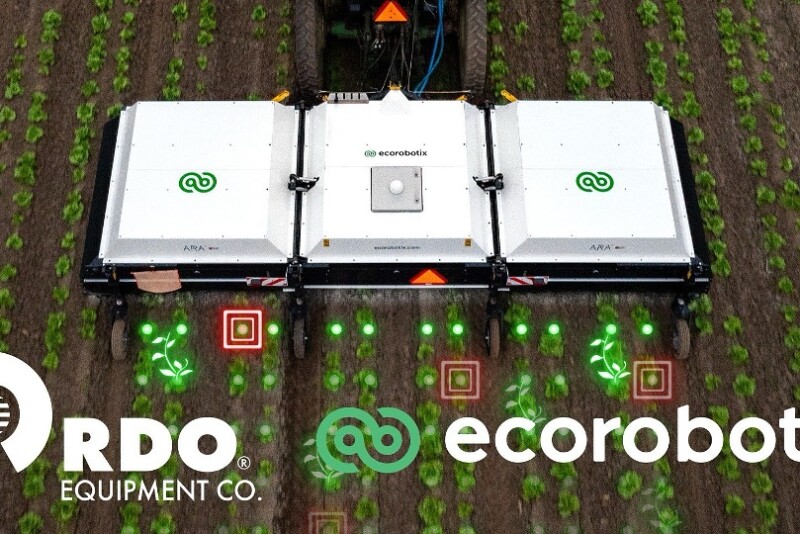
The AI Revolution in Agriculture: How Plant-by-Plant Care is Reshaping Our Food System
For centuries, the story of agriculture has been one of broad strokes—plowing vast fields, sowing seeds in long rows, and applying water, fertilizer, and pesticides across wide areas. This broadcast approach, while foundational to feeding the world, has always carried an inherent inefficiency. A significant portion of resources never reaches its intended target, leading to financial waste and environmental strain. Today, we stand at the precipice of a new agricultural era, one defined not by broad strokes but by microscopic precision. Driven by advancements in artificial intelligence, computer vision, and robotics, the concept of “plant-by-plant” care is transforming farming from a game of averages into a science of individuals. This technological leap is more than just an industry update; it represents a fundamental shift towards a more sustainable, efficient, and healthier food system. This evolution is making waves in Lifestyle News, as it directly impacts our Health & Wellness and the future of sustainable agriculture.
The Evolution from Blanket Coverage to Targeted Action
The journey towards ultra-high precision agriculture didn’t happen overnight. It’s the culmination of decades of innovation, moving progressively from managing entire farms to specific zones, and now, to individual plants. This progression mirrors a broader trend in technology, where mass-produced solutions are giving way to personalized, data-driven approaches, a theme often seen in everything from Personal Finance to Holistic Health.
Early Precision Agriculture: Managing by the Zone
The first wave of precision agriculture began in the 1990s with the advent of GPS technology. For the first time, farmers could map their fields with remarkable accuracy. This led to innovations like GPS-guided tractors that minimized overlap during planting and spraying, saving fuel and time. This was a significant step in improving Work-Life Balance for farmers. The next step was Variable Rate Technology (VRT), which used soil maps and yield data to apply different amounts of fertilizer or seeds to different “zones” within a single field. A patch of clay-heavy soil might receive a different nutrient mix than a loamy section just a few hundred feet away. This zonal management was a major leap in efficiency and a foundational practice in Sustainable Living, but it still treated large areas as uniform blocks.
The Leap to Plant-Level Intelligence
Plant-by-plant care represents a quantum leap forward. Instead of managing zones, this new paradigm treats each plant as an individual data point to be monitored and nurtured. The core technology, often called “see and spray,” uses advanced sensors and AI to make real-time decisions as equipment moves through the field. The primary application has been in weed control, a critical challenge for farmers. Traditional broadcast spraying involves coating an entire field with herbicide to kill the few weeds scattered among millions of crop plants. This is incredibly wasteful and has significant environmental consequences. Ultra-High Precision (UHP) systems, by contrast, identify individual weeds and deliver a micro-dose of herbicide directly onto them, leaving the crop and surrounding soil untouched. This surgical approach is a powerful tool for promoting Eco-Friendly Living and reducing the chemical load in our environment, a topic frequently covered in Nutrition News.
Deconstructing the AI-Powered Agronomist
The magic of plant-by-plant care lies in a sophisticated technology stack that combines advanced hardware and intelligent software. This system effectively creates a digital agronomist that can analyze and act on information at a speed and scale no human could ever achieve. The components are not unlike what you might find in an advanced Smart Home or Home Security system, but ruggedized and scaled for the demanding agricultural environment.
Computer Vision and Sensor Fusion

The “eyes” of the system are high-resolution cameras, often capturing images in both the visible (RGB) and non-visible spectrums (multispectral or hyperspectral). Mounted on a sprayer boom, these cameras scan the ground, capturing thousands of images per minute. This visual data is then fused with other sensor inputs, such as LiDAR for plant height and structure, and GPS for precise location mapping. This multi-layered data stream creates a rich, detailed digital twin of the field, moment by moment. These principles of data collection and analysis are even being explored in Urban Gardening to optimize small-space yields, showing how industrial tech can inspire personal Gardening Tips.
The Brains: Machine Learning and AI Algorithms
This is where the intelligence lies. The raw data from the sensors is fed into a powerful onboard computer running sophisticated machine learning models. These AI algorithms have been trained on vast datasets containing millions of images of crops and weeds at various growth stages and in different conditions. The AI learns to differentiate, for example, a young corn stalk from a visually similar foxtail weed with over 99% accuracy. This decision-making process—identify, classify, and decide to act—must happen in milliseconds as the sprayer travels at speeds of 10-15 miles per hour. This real-time processing capability is a monumental feat of engineering and a testament to the power of modern AI, offering a compelling piece of Investment News for the AgTech sector.
The Action: Robotic Actuators and Micro-Sprayers
Once the AI identifies a target weed, it sends a signal to a specific nozzle on the spray boom. These are not simple on/off valves. Modern UHP systems use robotic actuators with pulse-width modulation (PWM) technology, allowing each nozzle to fire a precise, targeted micro-spray. The spray zone can be as small as a postage stamp. With nozzles spaced just inches apart along a 120-foot boom, the system can selectively treat individual weeds while leaving the crop, bare soil, and beneficial insects unharmed. This level of precision is a game-changer for Green Living, dramatically reducing the environmental footprint of farming.
From Farm to Table: The Ripple Effects of Precision Plant Care
The impact of this technology extends far beyond the farm gate. It creates a positive ripple effect that touches environmental health, consumer wellness, and the economic viability of farming, contributing to a more resilient and sustainable global community.
Economic and Financial Implications for Farmers
The most immediate benefit for farmers is a drastic reduction in input costs. Herbicides, pesticides, and fertilizers are major expenses. Real-world case studies have shown that UHP spraying technology can reduce herbicide use by 70-95%. For a farmer managing 2,000 acres, this can translate into savings of tens or even hundreds of thousands of dollars annually. This is not just a Budget Tip; it’s a fundamental shift in farm economics. While the initial investment in the technology is high, the return on investment can be realized in just a few seasons. This makes long-term Financial Planning more predictable and resilient for farming operations, reducing the Stress Management challenges associated with volatile input markets.
Environmental and Health Benefits

The environmental dividends are profound. By minimizing chemical application, UHP technology drastically reduces the risk of herbicide runoff into waterways, protecting aquatic ecosystems and drinking water sources. It also promotes soil health by avoiding the blanket application of chemicals that can harm beneficial microorganisms. For consumers, this translates into food with less potential for chemical residue, a key driver in the Health & Wellness and Natural Beauty movements. This focus on cleaner inputs aligns with the principles of Holistic Health, where the quality of our food is seen as foundational to our well-being. Furthermore, this technology supports biodiversity, as it spares non-target plants that provide habitat for pollinators and other beneficial insects, a crucial aspect of Eco-Friendly Living.
A New Paradigm for Sustainable Farming
This technology also has the potential to revolutionize farming practices. For example, it makes the fight against herbicide-resistant “superweeds” more manageable by allowing for the targeted use of more diverse and effective chemical combinations. It also makes cover cropping—a key regenerative agriculture practice—more viable, as the system can be trained to spray weeds while leaving the beneficial cover crop intact. This level of precision empowers a more thoughtful and integrated approach to land management, fostering a sense of Community Living and shared stewardship of our natural resources.
Navigating the Future of Farming: Adoption and Outlook
While the promise of plant-by-plant care is immense, its widespread adoption faces both opportunities and challenges. Navigating this transition requires careful consideration of technology, training, and policy.
Pros, Cons, and Best Practices

The advantages are clear: unprecedented cost savings, significant environmental benefits, and improved crop health. However, the barriers to entry are real. The primary challenge is the high upfront capital cost of the equipment. Furthermore, operating and maintaining these sophisticated systems requires a new skill set, blending agronomy with data science. This presents a new frontier in Career Advice for those entering the agricultural field. Data management and rural internet connectivity, a common hurdle for Remote Work in any sector, also pose challenges.
For farmers considering adoption, best practices include starting with a pilot program on a smaller acreage, investing in comprehensive training for operators, and developing a robust data management strategy. Viewing the technology not as a simple replacement for an old sprayer but as a long-term investment in a new farming philosophy is key to success. This strategic approach is a form of Personal Development for the modern farmer.
The Future Outlook: Beyond Weeds
The current focus of UHP technology is on weeding, but this is just the beginning. The next evolution will see these AI-powered systems performing a multitude of tasks. Future iterations will be able to identify and spot-spray for specific insect pests or fungal diseases before they can spread. They will also be able to detect nutrient deficiencies at the plant level, delivering a targeted micro-dose of nitrogen or potassium exactly where it’s needed. This will further reduce fertilizer use and optimize plant health, directly influencing our Meal Planning with more nutrient-dense foods. Ultimately, we can envision fleets of autonomous machines tending to fields 24/7, each plant receiving a perfectly customized care regimen, a vision that scales up the ideals of meticulous Plant Care to an industrial level.
Conclusion: A New Harvest of Innovation
The shift to plant-by-plant care is more than an incremental improvement; it is a paradigm shift that redefines our relationship with the land. By harnessing the power of artificial intelligence and robotics, we are moving away from the inefficiencies of the past and toward a future where agriculture is precise, sustainable, and incredibly productive. This technological revolution provides powerful tools to address some of our most pressing global challenges, from environmental protection to food security. It promises not only a more profitable future for farmers but also a healthier planet and a more nutritious food supply for all. This convergence of nature and technology is cultivating a new harvest of innovation, ensuring that the fields of tomorrow are as intelligent as they are green.
Archives
- December 2025
- November 2025
- October 2025
- September 2025
- August 2025
- October 2023
- September 2023
- August 2023
- July 2023
- June 2023
- May 2023
- April 2023
- March 2023
- February 2023
- January 2023
- December 2022
- November 2022
- October 2022
- September 2022
- August 2022
- June 2022
- May 2022
- April 2022
- March 2022
- January 2022
- December 2021
- November 2021
- October 2021
- August 2021
- November 2020
- July 2020
- May 2020
- April 2020
- March 2020
- August 2018
- July 2018
- June 2018
- April 2018
- March 2018
Categories
- Age Groups
- AI/ML
- Alternative Medicine
- Animal Health
- Animal Husbandry
- Animals
- Anti-Aging
- Architectural Design
- Auditory Science
- Augmented Reality
- Automation
- Babies
- Baby
- Beauty & Skincare
- Biohacking
- Biomechanics
- Book Reviews
- Breastfeeding
- Budgeting
- Business
- Cardiovascular Health
- Career Advice
- Career Development
- Career Growth
- Cats
- Chess
- Chronobeauty
- Circular Economy
- Cleaning Tips
- Cloud Computing
- Cognitive Health
- Cognitive Performance
- Cognitive Science
- Community
- Community Building
- Community Engagement
- Community Living
- Computer Vision
- Consumer Guides
- Consumer Trends
- Container Gardening
- Content Analysis
- Content Non-Technical
- Content Strategy
- Cosmetic Chemistry
- Cultural Events
- Cycling
- Data Analysis
- Data Engineering
- Data Science
- Design Psychology
- Developer Productivity
- Diet
- Diet
- Digital Identity
- Digital Media
- Digital Wellbeing
- DIY Projects
- Dogs
- Engineering Culture
- Entertainment News
- Environmental Impact
- Environmental Science
- Equity Compensation
- Exercise
- Exercise Science
- Exercise Technique
- Exotic Pets
- Fall Gardening
- Family
- Family Health
- Family Life
- Fashion Business
- Fashion Industry
- Fashion News
- Fashion Tech
- Financial Analysis
- Financial Planning
- Flooring Maintenance
- Food
- Food Psychology
- Food Safety
- Food Tech
- Functional Fitness
- Functional Training
- Future Of Work
- Garden Care
- Garden Maintenance
- Gardening Tips
- Greece
- Greek
- Greek Food
- Gymnastics
- Hardware Engineering
- Health
- Health And Wellness
- Health Informatics
- Health Science
- Health Tech
- Healthcare Management
- Healthy Eating
- Healthy Recipes
- Holistic Health
- Holistic Wellness
- Home & Living
- Home Decor
- Home Financing
- Home Health
- Home Improvement
- Home Organization
- Horticulture
- Identity Management
- Industrial Design
- Industry Analysis
- Infant Nutrition
- Infrastructure Management
- Ingredient Deep Dive
- Integrative Medicine
- Interior Design
- Internet of Things
- Internet of Things (IoT)
- Invalid Request
- Investment Strategies
- Investment Strategy
- IoT
- Kids
- Leadership Development
- Learning Strategies
- Lifestyle
- Lifestyle Brands
- Lifestyle News
- Lifestyle Optimization
- Literary Criticism
- Literature
- Logistics Management
- Material Science
- Materials Science
- Meal Planning
- Media Analysis
- Meditation
- Mental Health
- Mental Performance
- Mental Wellness
- Miami
- Miami Food
- Mind And Body
- Minimalism
- Mobile Development
- Neuroscience
- No Applicable Categories
- Nutrition
- Nutrition News
- Operating Systems
- Operational Resilience
- Opinion
- Organization Tips
- Outdoor Living
- Over 40
- Over 50
- Over 60
- Parenting
- Parenting
- Parenting Strategies
- Performance
- Personal Development
- Personal Finance
- Personal Growth
- Personal Productivity
- Pet Care
- Pet Safety
- Philosophy
- Politics
- Productivity
- Protein
- Psychology
- Psychology of Space
- Reading Culture
- Real Estate Investment
- Recipes
- Regulatory Compliance
- Remote Work
- Renovation Planning
- Resource Management
- Responsible Pet Ownership
- Retail Strategy
- Robotics
- Science
- Seafood
- Seasonal Gardening
- Security
- Self-Care
- Skincare Science
- Skincare Trends
- Sleep
- Sleep Health
- Smoothies
- Social Impact
- Soft Skills
- Soil Health
- Spatial Computing
- Spatial Design
- Stress Management
- Supplements
- Sustainability
- Sustainability Science
- Sustainable Engineering
- Sustainable Fashion
- Systems Engineering
- Tax Optimization
- Tax Strategy
- Travel
- Travel News
- Travel Safety
- Travel Tips
- Trend Analysis
- Uncategorized
- Urban Planning
- Veggie
- Virtual Events
- Volunteering
- Wealth Management
- Wearable Technology
- Wellness
- Wellness Technology
- Work-Life Balance
- Workplace Culture
- World
- Writing
- Writing Skills
- Yoga News
- Zero Waste




Leave a Reply